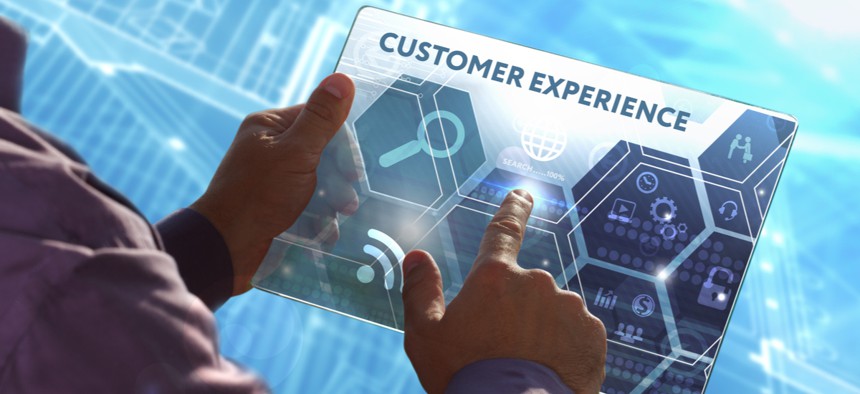This One Rule Informs All of Veterans Affairs' Customer Service Decisions

Photon photo/Shutterstock.com
Bells and whistles are great, but they don't matter if they aren't helping customers, Veterans Affairs Department's Lynda Davis said.
The woman leading the movement at the Veterans Affairs Department to improve customer service for millions of veterans across the country has advice for the rest of the government: Be your customer.
And if you can’t always put yourself in your customer’s shoes, Chief Veterans Experience Officer Lynda Davis said Thursday, at least remember that you’re a human being dealing with another—possibly flustered, frustrated or unhappy—human being.
“While we engage a lot of technology and it’s very important, the key thing I always urge is to remember the human equation,” Davis said, speaking at the Customer Experience Summit, hosted by Government Executive and Nextgov. “Be the customer you are serving. Put yourself in the middle and walk that journey.”
Davis, who served in the U.S. Army and is a mother to a veteran, has firsthand experience dealing with the agency she’s now charged to help lead. Across government, officials are often customers of their own agencies, such as Transportation Security Administration employees who fly or IRS workers who pay taxes.
When you can’t be your agency’s customer, the next best thing is to pretend to be.
Davis said VA mapped dozens of customer journeys, scouring all the ways in which veterans engage the agency to document “moments that matter”—interactions critical to a positive experience.
As most agencies struggle to provide citizens and taxpayers the kinds of customer experience they’re used to receiving from private-sector companies, VA has assembled a wing dedicated to improving how the agency delivers services, including benefits and health care, to veterans.
Early wins at the agency include collecting real-time feedback from vets, a streamlined website and an improved crisis line, but Davis said technology and “bells and whistles” mean little if they aren’t translating to measurable, better customer outcomes.
“We’re constantly looking at how we use resources, but it’s easy to get hung up on resources and sometimes forget the actual experience with the customer,” Davis said.
Broadly, Davis said VA wants to beef up partnerships with outreach groups and local veteran organizations to further engage veterans, a way to generate another channel of feedback from live “boots on the ground.” Personal feedback, she said, will add another dimension to information already collected by surveys, website chatter and hotlines, and outreach puts people familiar with VA’s mission in arm’s reach of veterans.
“We never want to lose sight of the customer experience,” Davis said.
NEXT STORY: Senate bill keeps election systems critical






